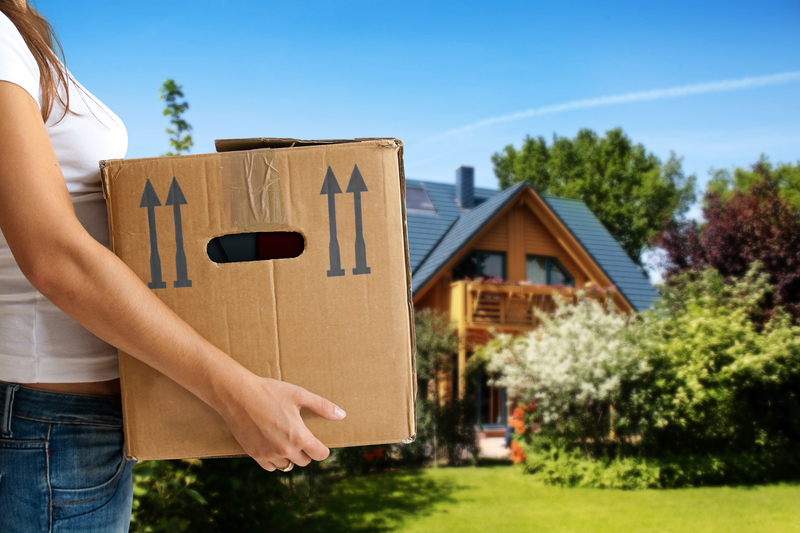Best Practices for Moving Collectibles
Posted on 15/01/2025
Moving collectibles requires meticulous planning and attention to detail. Unlike regular household items, collectibles often hold significant financial and sentimental value. This article explores the best practices for safely moving collectibles, ensuring that they arrive at their new destination in the same condition they left.
Assess Your Collection
Before you begin packing, it's essential to assess your entire collection. Understanding what you have will determine the type of packing materials you'll need. Create a detailed inventory list, complete with descriptions and photographs of each item. This inventory will not only help in keeping track of your items but also serve as a valuable record for insurance purposes.

Research the Value
Knowing the value of your collectibles helps in making informed decisions about insurance and packing methods. Some collectibles may be worth more than others, requiring extra care and specialized packing materials. Consult with appraisers and use online resources to get an accurate valuation of your entire collection.
Get Professional Appraisals
If your collection is particularly valuable, consider getting professional appraisals. An appraisal provides a documented value of your collectibles, which is invaluable for both insurance and resale purposes. Make sure the appraiser is certified and recognized in their field.
Secure Adequate Insurance
Insurance is a critical part of moving collectibles. General movers' insurance may not adequately cover the value of your items. Look into specialized insurance policies that are designed for high-value collectibles. Ensure that the policy covers loss, theft, and damage during transit.
Choose the Right Packing Materials
The packing materials you choose are crucial to the safe transport of your collectibles. Here are some recommendations:
- Bubble Wrap: Excellent for cushioning fragile items.
- Acid-Free Tissue Paper: Ideal for wrapping delicate items to prevent damage and degradation.
- Sturdy Boxes: Use double-walled boxes for extra protection.
- Custom Crates: For extremely valuable or fragile items, custom-built wooden crates offer the best protection.
- Foam: Custom-cut foam inserts can provide a snug fit, preventing movement during transit.
Proper Packing Techniques
Packing collectibles requires more than just putting items in boxes. Proper techniques are essential:
- Layering: Use multiple layers of packing material for added protection.
- Separation: Ensure items do not touch each other within the box to prevent scratches and damage.
- Labeling: Clearly label boxes as "Fragile" and include specific details about the contents.
- Sealing: Use high-quality packing tape to securely seal boxes and prevent them from accidentally opening.
- Weight Distribution: Don't overcrowd boxes; distribute weight evenly to avoid items moving around.
Consider Climate Control
Certain collectibles are sensitive to temperature and humidity changes. Fine art, vintage toys, and rare books can deteriorate if exposed to extreme conditions. If you're moving such items, consider climate-controlled transportation options. Specialized moving companies often offer these services.
Hire Specialized Movers
While general moving companies are adequate for most household items, collectibles often require the expertise of specialized movers. These professionals are trained in handling delicate and high-value items. They use specific techniques and materials to ensure your collectibles are safe during transit. Always verify their credentials and read reviews from past clients.
Transportation and Handling
The mode of transportation is another critical factor. Whether you are moving across town or across the country, you'll need to decide between air, sea, or land transport. Each option has its pros and cons:
- Air: Fast but potentially expensive. Ideal for very high-value, time-sensitive items.
- Sea: Cost-effective for international moves, but slower. Requires excellent packing and climate control.
- Land: Typically more accessible and flexible. Suitable for short-to-mid-range distances.
Handling during transit is equally important. Ensure that boxes are not stacked too high and that there is minimal movement inside the transport vehicle. If possible, personally supervise the loading and unloading process.
Arrival and Unpacking
Upon arrival at your new location, the first step is to check the condition of your boxes. Look for any signs of damage, such as crushed corners or wet spots, as these may indicate potential issues with the contents. Unpack your collectibles carefully, following the reverse order of your packing process.
Inspect each item as you unbox it, comparing it to the photos and descriptions in your inventory list. Any damages should be documented immediately and reported to your insurance company.
Setting Up in the New Location
Once your collectibles are safely unpacked, consider the best way to display or store them in your new home. Proper shelving, display cases, and storage options not only make your collectibles accessible but also protect them from damage.

Maintain Documentation
Keep all documentation related to the move, including your inventory list, photos, appraisals, insurance policies, and any correspondence with moving companies. This documentation will be invaluable in the event of any disputes or claims.
Conclusion
Moving collectibles requires a high level of care and planning. From assessing your collection and securing adequate insurance to choosing the right packing materials and hiring specialized movers, each step is crucial to ensuring the safe transport of your valuable items. By following these best practices, you can minimize risks and make the moving process as smooth as possible. Remember, your collectibles are not just items; they are treasures that deserve the utmost care and attention.




